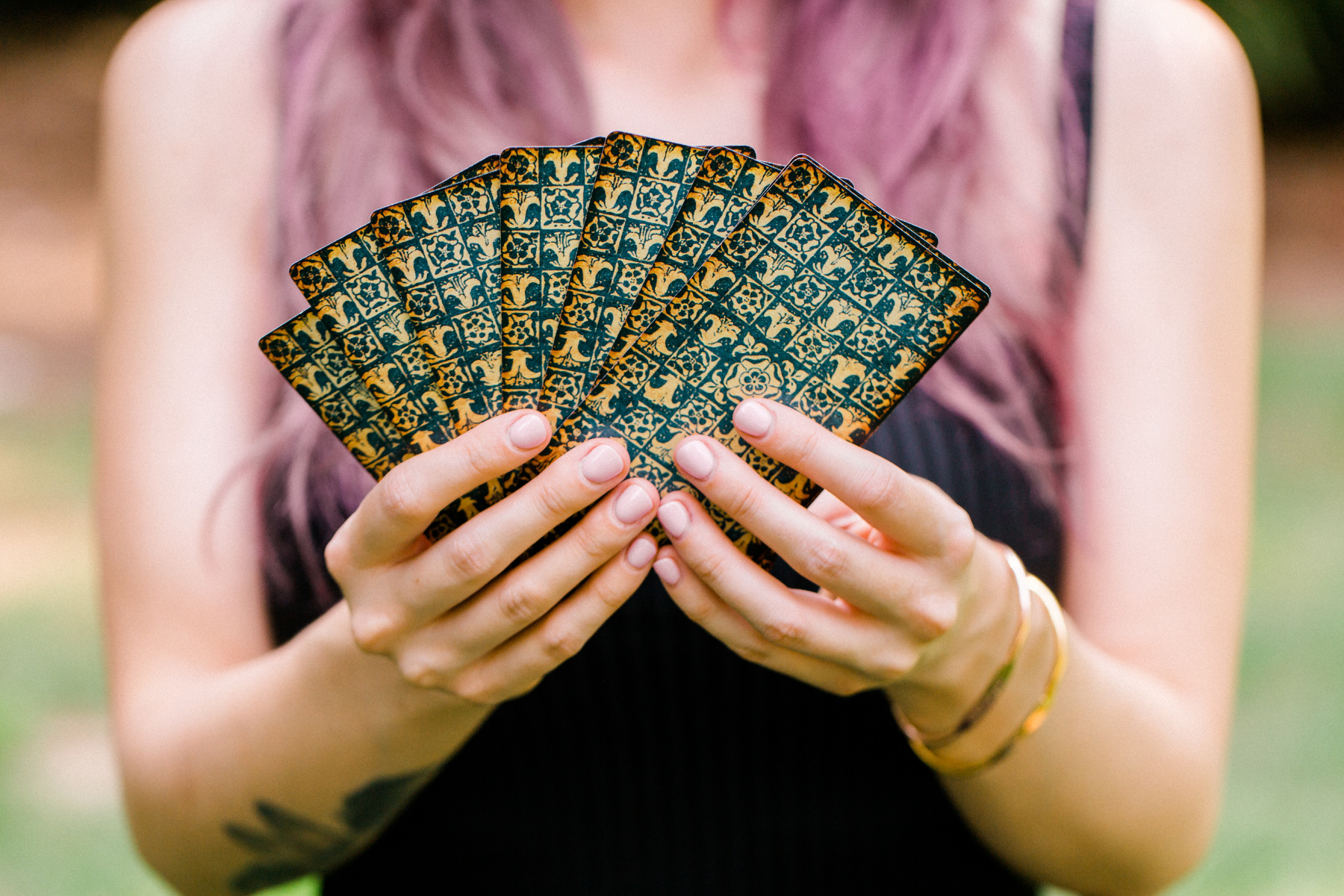Far from the pop culture depiction of tarot, these cards don’t exactly tell your future. And that death card, well it doesn’t mean you’re in for a meeting with the Grim Reaper. Think insight over fortune telling.
Instead, many people who practice tarot prefer to think of this divination tool as a way to connect to Universal insight ; some practitioners even hold tarot as a way to receive wisdom from their ancestors. There is no right or wrong here, but for our purposes today we’ll reference tarot as a tool to tap into Universal insight.
There’s a lot of information out there on tarot and it can be overwhelming, but we’ve got you covered if you’re just stepping into the world of tarot!
What is tarot?
Tarot cards are a divination tool that relies on symbolic imagery to provide insight or advice about the present. A deck contains 78 cards made up of 22 Major Arcana cards, which are believed to represent man’s journey and 56 Minor Arcana cards, which represent the temporary trials and tribulations of life. The Minor Arcana is comprised of four suits: cups, pentacles, swords, and wands. Each of the 78 cards holds its own story and wisdom. Its meaning and application depend largely on the question or situation presented.
The simplest way to use tarot is to ask a question and then pull a tarot card to receive guidance regarding your question.
Where do tarot cards come from?

There’s some debate among occultists and theologians about when and where tarot cards came from, but we know the affluent used them to play a game in Italy similar to bridge called tarocchi (tarot in French), likely in the 14th or 15th century. They weren’t quite the intricate, storytelling images they are now, however; they more closely resembled the playing cards we use today.
It wasn’t until the occult became popular in the 18th century that people began to use the cards for divination. French writer and scholar, Antoine Court de Gébelin is credited with tying symbolism of the tarot to ancient Egyptian mythology and gypsy lore. Around the same time, Comte de Mellet introduced the idea that tarot cards held a connection to Jewish Kabbalah.
How do I choose the right deck for me?

We could write volumes on how to choose a tarot deck. It’s an incredibly personal process and everyone has their own preference. This is, by all means, not an exhaustive guide.
Though there are thousands of different tarot decks on the shelves, the Rider-Waite Tarot deck is the most widely recognized and used - and with good reason. Its uncluttered images are easy to navigate and many beginner’s guides use the deck as their example. More advanced tarot practitioners may want to delve into more abstract tarot decks with more complex imagery. Though experience level is a factor in choosing the perfect deck for you, it’s not the most important one.
More than anything, trust your intuition. Take your time. If possible, pick up the decks to feel their energy. Examine the imagery and symbolism used. Do you feel a connection or do you draw a blank immediately? Remember, tarot cards are your access to Universal wisdom - trust and connection are key.
Are you ready to jump in and buy your first tarot deck?





Leave a comment